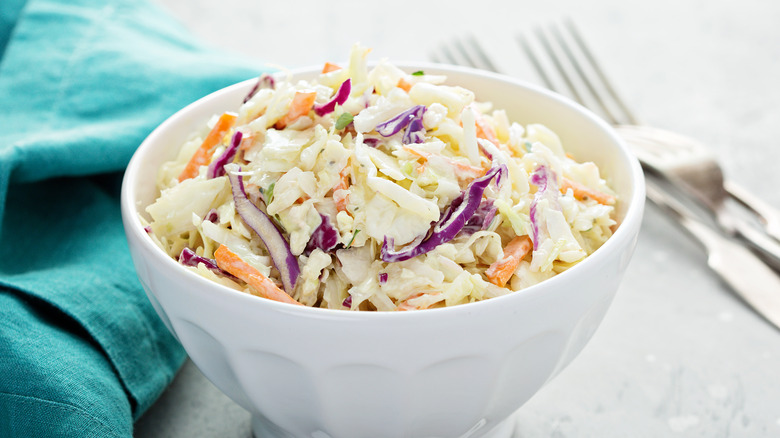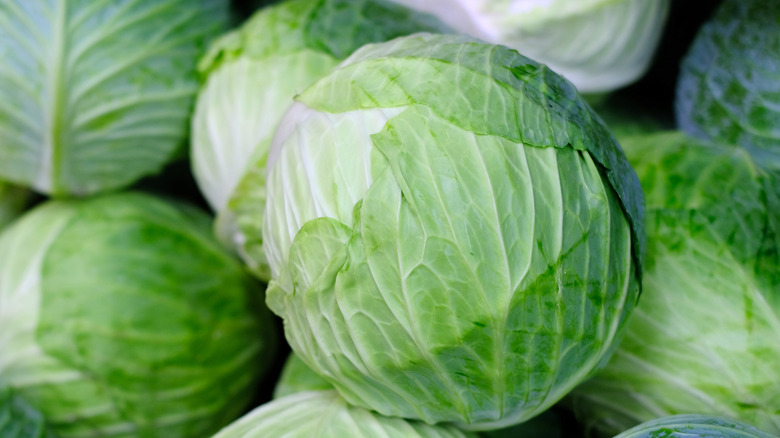The Best Type Of Cabbage For A Balanced Coleslaw
Nothing says summer quite like coleslaw. While there's never a bad time to eat shredded cabbage salad, it often makes its most notable appearances at backyard barbecues and picnics in the park. Served alongside sliders and ribs or on top of fish tacos, coleslaw adds a bit of crunch and flavorful punch to any plate — but only when it's prepared correctly. If you've been trying to perfect your slaw recipe and keep coming up short, there's something you should know. The key to a better and more balanced coleslaw actually depends on which cabbage you use.
While coleslaw dressing can play a huge role in the success of a slaw, there's more to a good salad than a well-made vinaigrette or creamy condiment. Additional ingredients like julienned carrots, a handful of herbs, or some crushed walnuts can help to jazz up coleslaw and create a contrast of tastes and textures, but the most important element of coleslaw is actually the cabbage. Although you might have yet to give it much thought, the variety used can make a difference in your recipe. The big question is, which cabbage is king?
Green cabbage is mild in flavor and won't overpower other ingredients
It's true that you can make a slaw with almost any cruciferous vegetable. However, cabbage is crucial to make the most classic rendition of coleslaw. All sorts of varieties exist, but the most common cabbages used are the dense and tightly-packed red and green varieties — the latter being our preference.
Both cabbages deliver on crunch, with their crisp leaves providing the perfect amount of bite needed in coleslaw, but the real difference between the two stems down to taste. Unlike red cabbage that's darker in hue and slightly peppery, green cabbage offers a mild and vegetal flavor that borders on sweet, making it a clear choice for slaw. Also known as "cannonball cabbage," neutral-flavored green cabbage can be a blank canvas for rich and bold dressings, just as much as delicate condiments. By not imparting its punchiness, green cabbage can better create harmony as it mixes with other ingredients.
With this tip in mind, the only thing that can make a homemade batch of coleslaw even more well-rounded is by playing with varying flavors and textures. Whatever you add to the recipe, know that your slaw will taste better after resting in the fridge for at least a few hours. Just don't keep coleslaw too long, or it'll start to get soggy.

